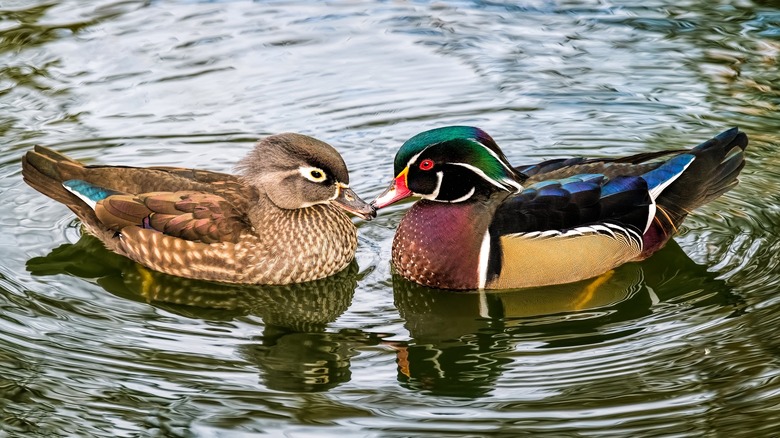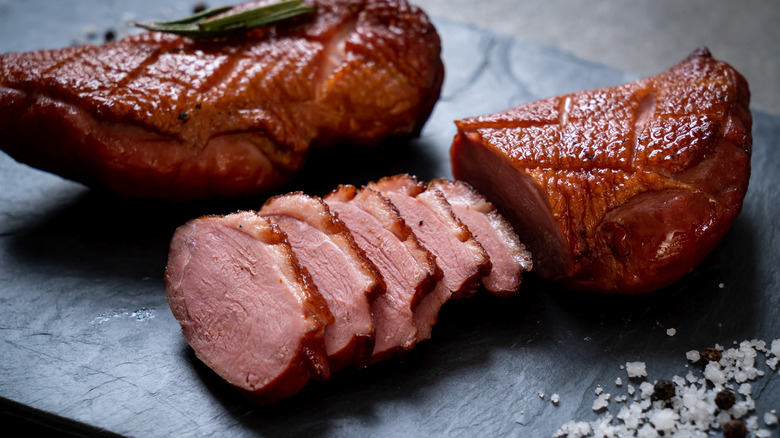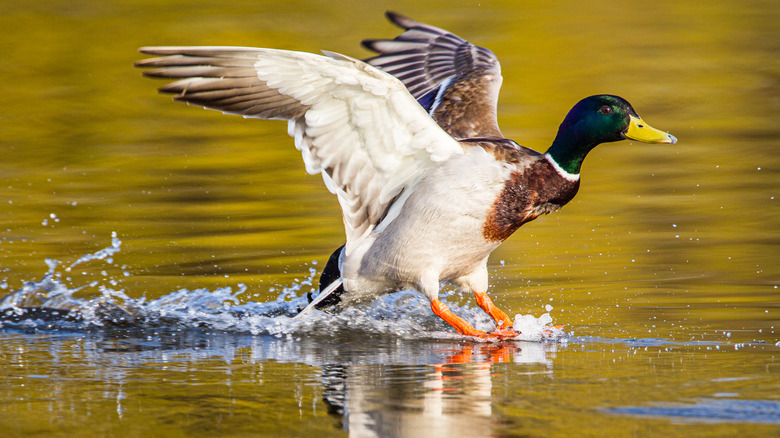Farmed Duck Vs. Wild Duck: What's The Difference?
There's no shortage of information on the differences between wild and farmed meat out there, and even if you've never read a word on the subject, it's pretty straightforward. Wild usually means the animal lived as close to a normal life as possible — on its own, in the wild, eating normal, wild-animal foods and doing normal, wild-animal things (via World Animal Protection) — and that holds true for duck meat as well. Other than a purported health benefit or two or a tidbit about the color of the flesh someone once told you, does the environment the duck was raised in really make a difference once it's on your plate?
Turns out it probably does. If you've ever seen wild duck on a menu, you were probably enjoying a nice meal at a nice restaurant. Wild duck, and duck in general, is not common to see on menus or at grocery store meat counters, The Counter points out. If you've tasted it, gamey and smoky probably come to mind. But duck meat is actually much more nuanced than that, and a lot of its subtle flavors can be attributed to the duck's diet and whether it grew up running wild or with Old McDonald.
Farmed duck is tenderer and fattier
Much like chicken, farmed duck is bred as a source of food for us — namely meat and eggs. The most common farmed duck is Pekin (not to be confused with Peking, which is a method for roasting and preparing the bird). A farmed duck's diet typically consists of vitamin-fortified corn and soybeans (per the USDA).
According to Fowl Guide, most domesticated ducks do not fly, so they get less activity than wild ones. The ability to fly has often been bred out of them, and they are generally heavier and unable to lift off the ground. They also have more easy access to food and don't have to forage in the wild. Because of this sedentary lifestyle and plentiful diet, farmed duck meat is fattier (and tastier for that reason, according to Chef Tastes). Farmed ducks are usually slaughtered young, resulting in more tender meat than an older waterfowl (via Tastylicious).
Wild duck is tougher and gamier
The wild duck you are probably most familiar with is every coastal grandmother's favorite tchotchke, the Mallard. Per Cook's Info, duck meat will taste like the animal's diet, and unlike with farmed duck, you have no idea what a wild duck has been dining on. Wild ducks are omnivores, consuming mostly plant material as well as insects and even small fish. Contrary to every child's popular belief, though, bread isn't good for them (via LearnPoultry).
Wild ducks fly and are more active than their farmed counterparts, lending to leaner meat and a stronger flavor. Food writer Nate Teague of Tastylicious points out you also have pretty much no idea how old a wild duck is when it's hunted for consumption. On average, wild ducks live between five to 10 years, according to BirdFact. This leads to a wide range in possible textures of the meat, as an older bird will be tougher.


